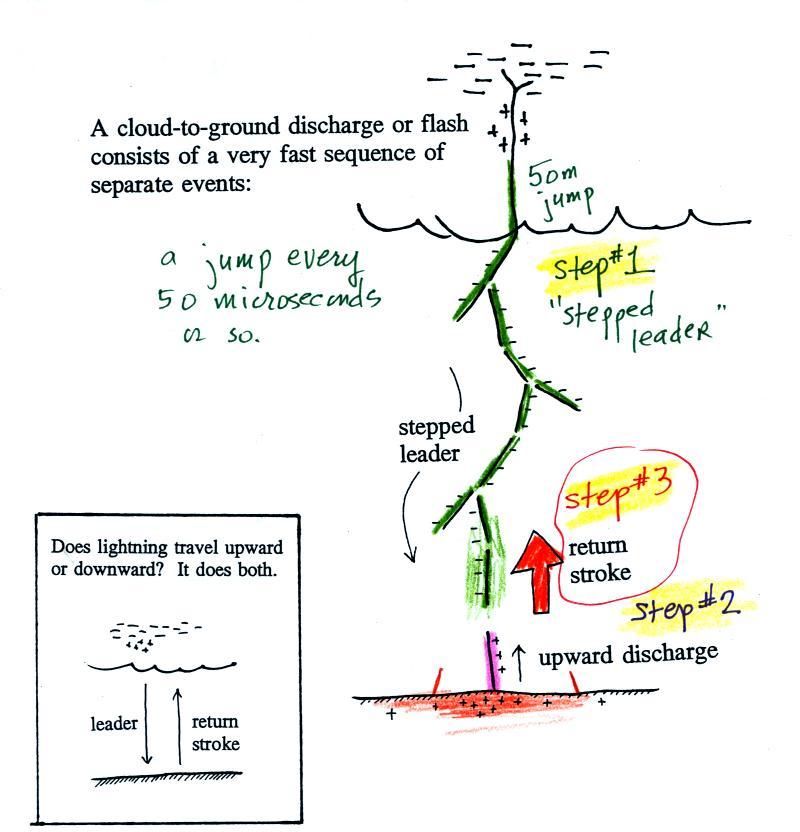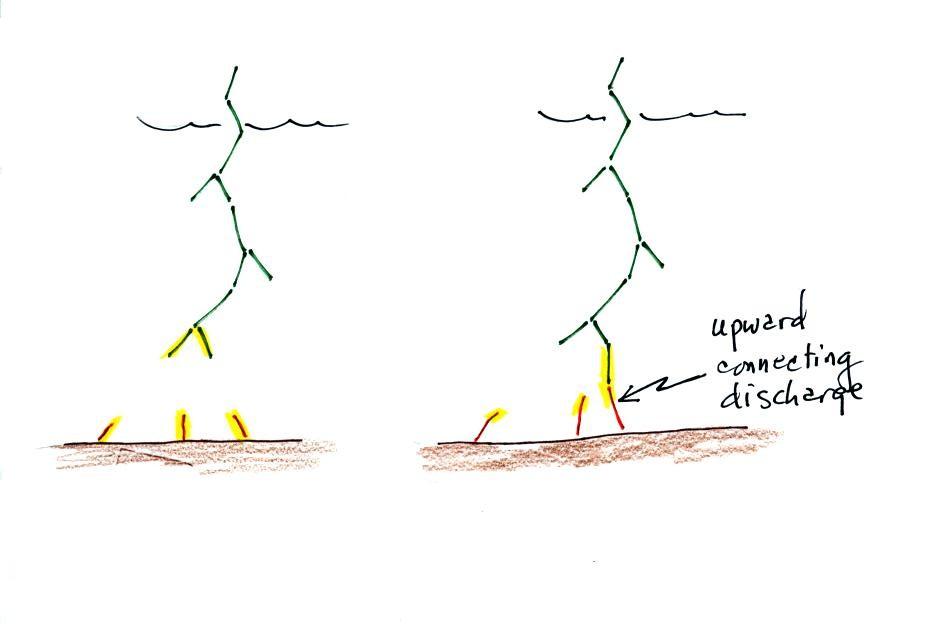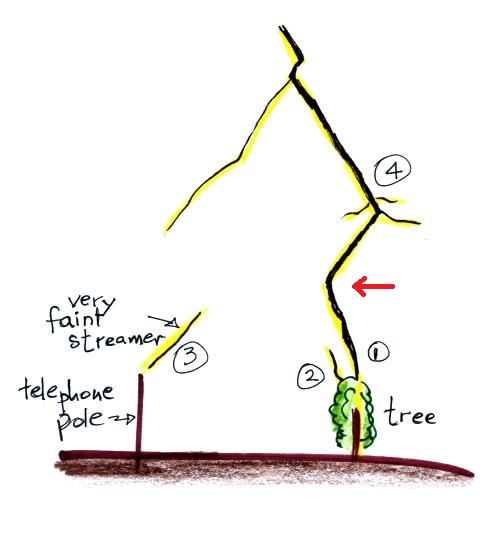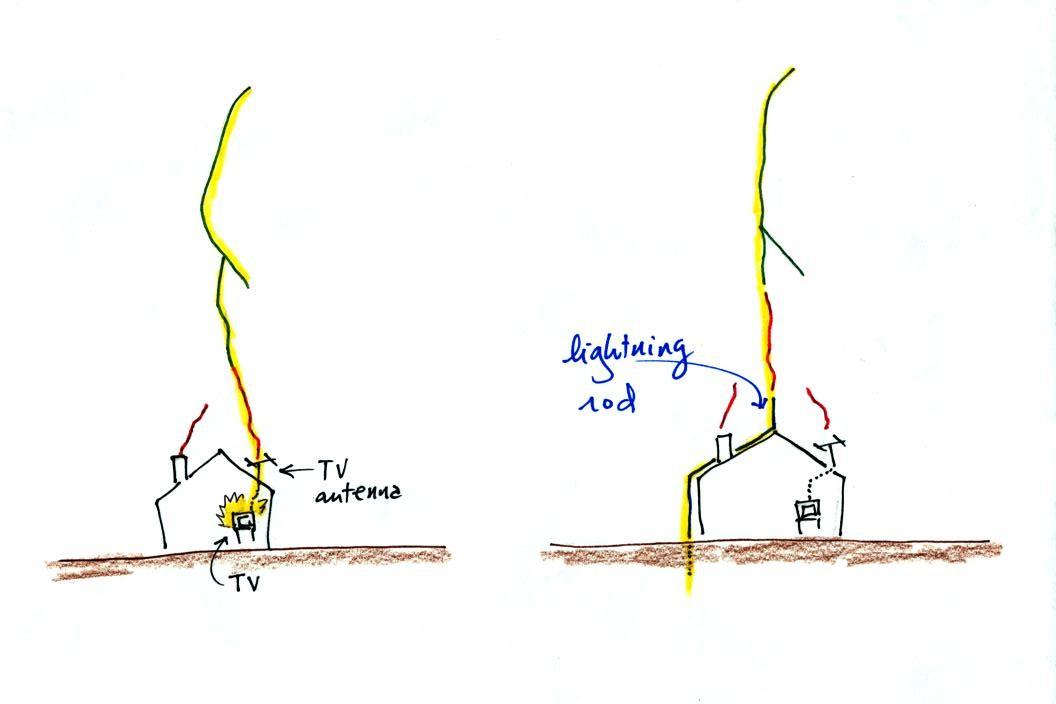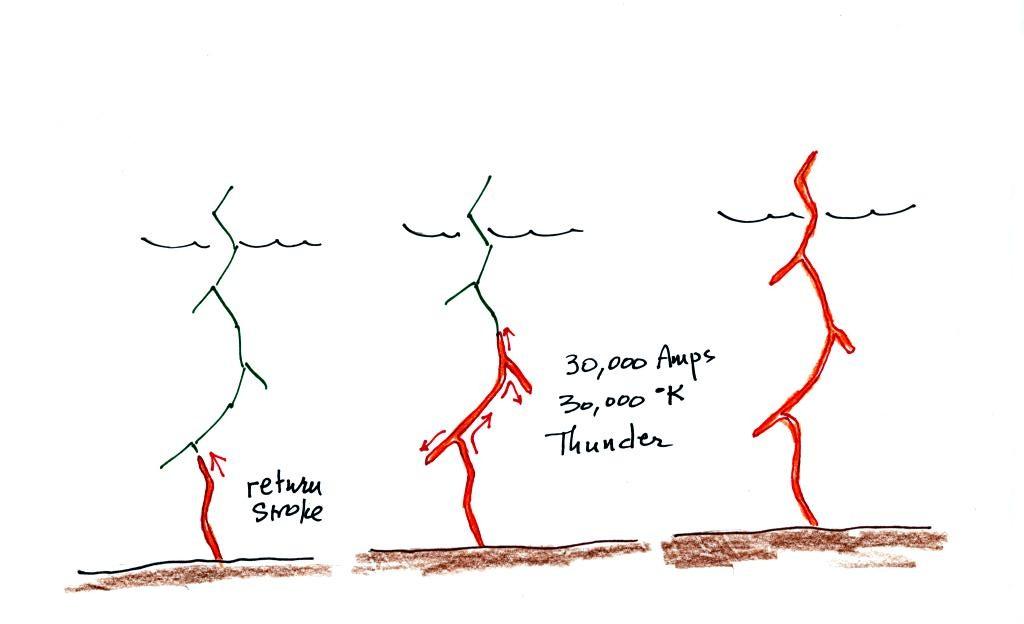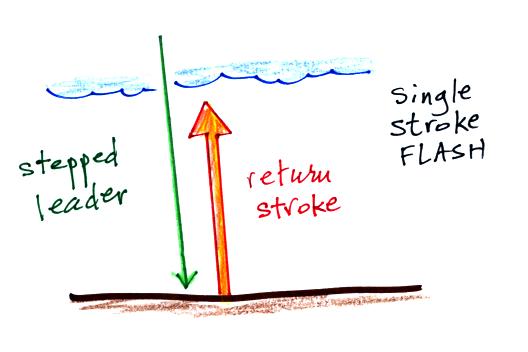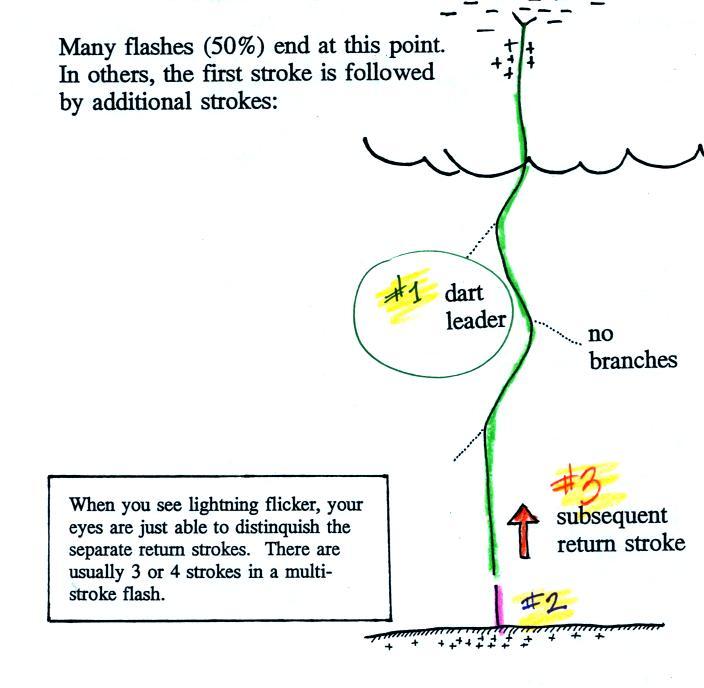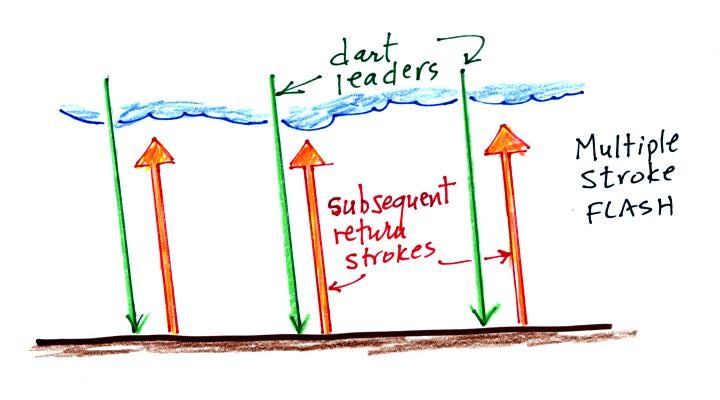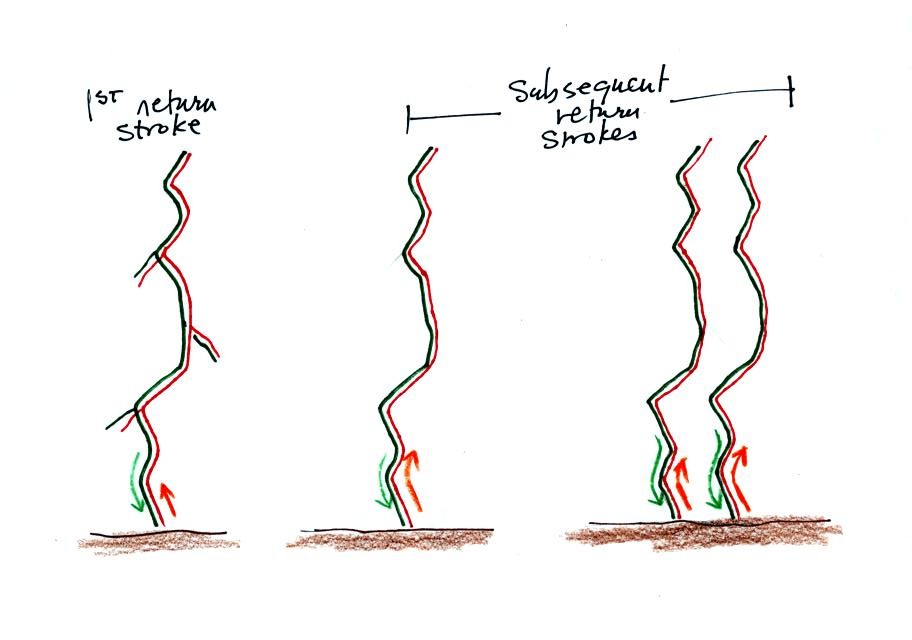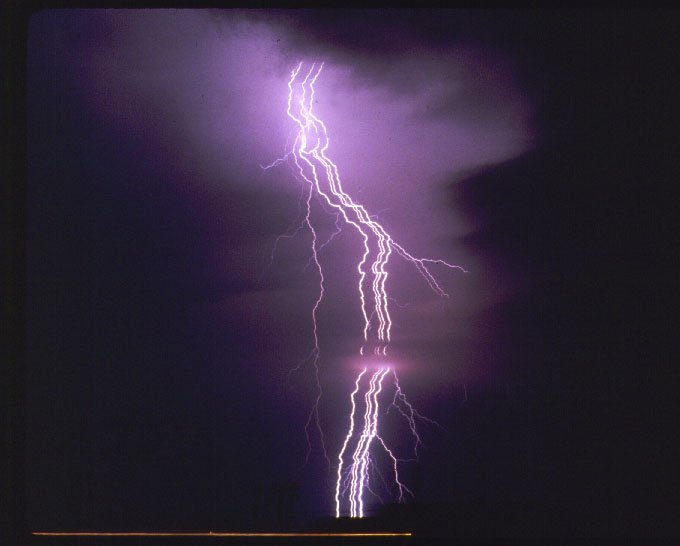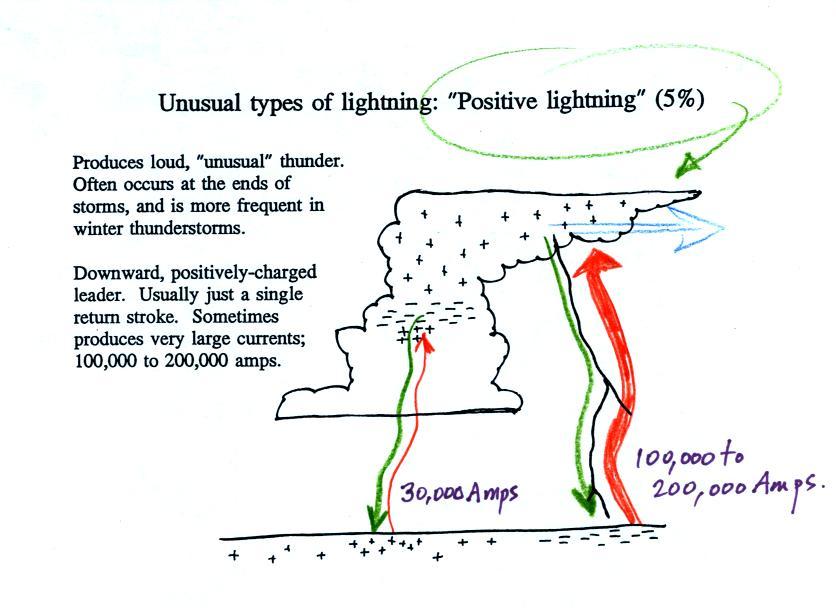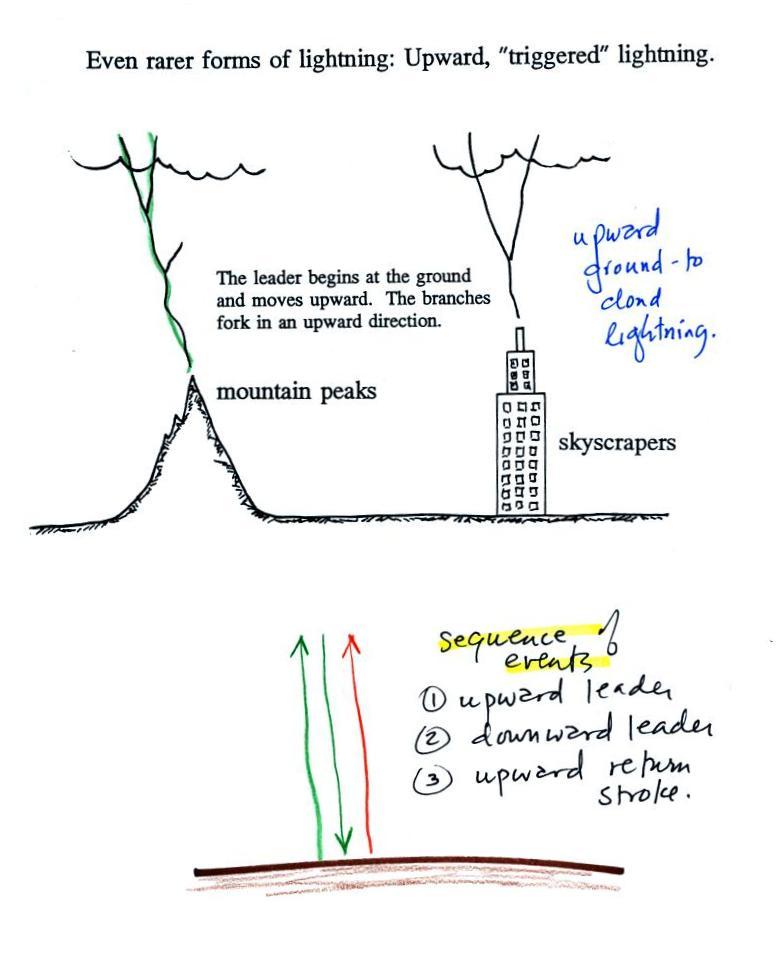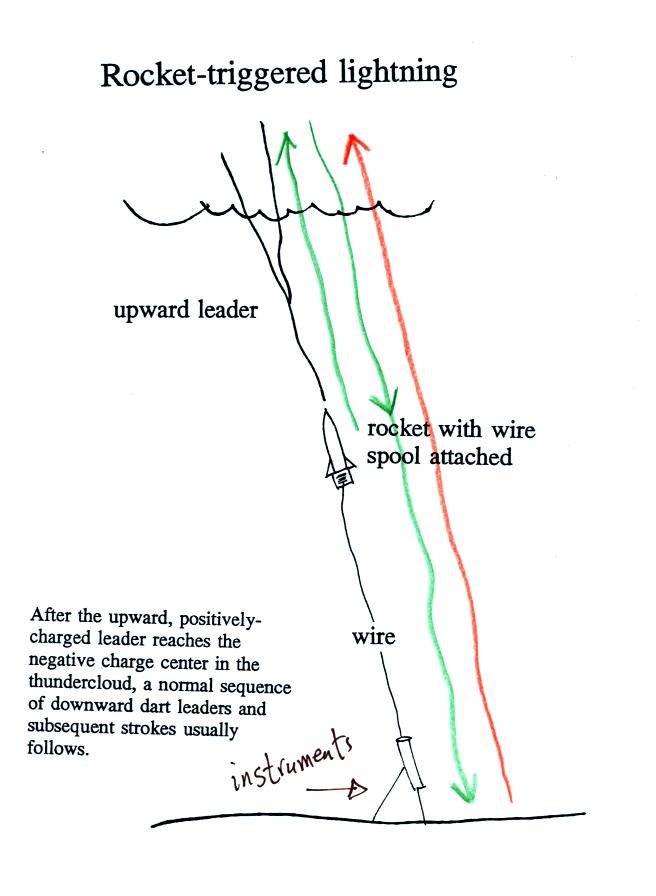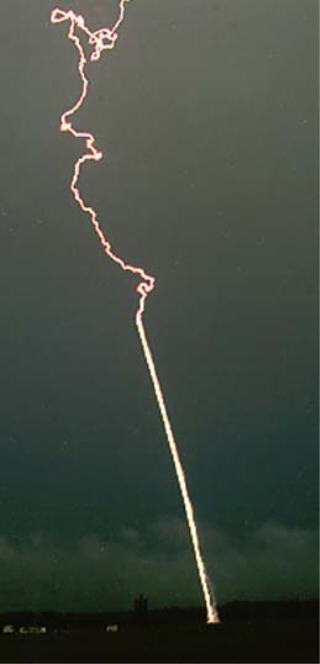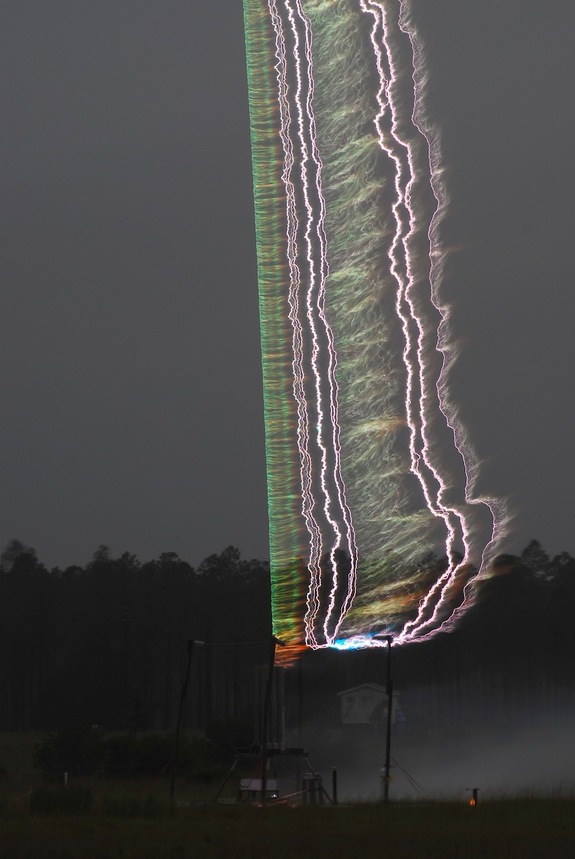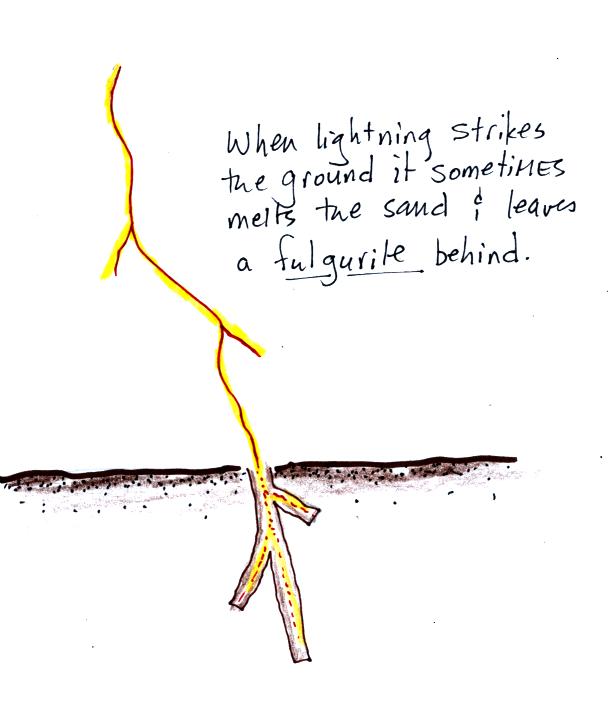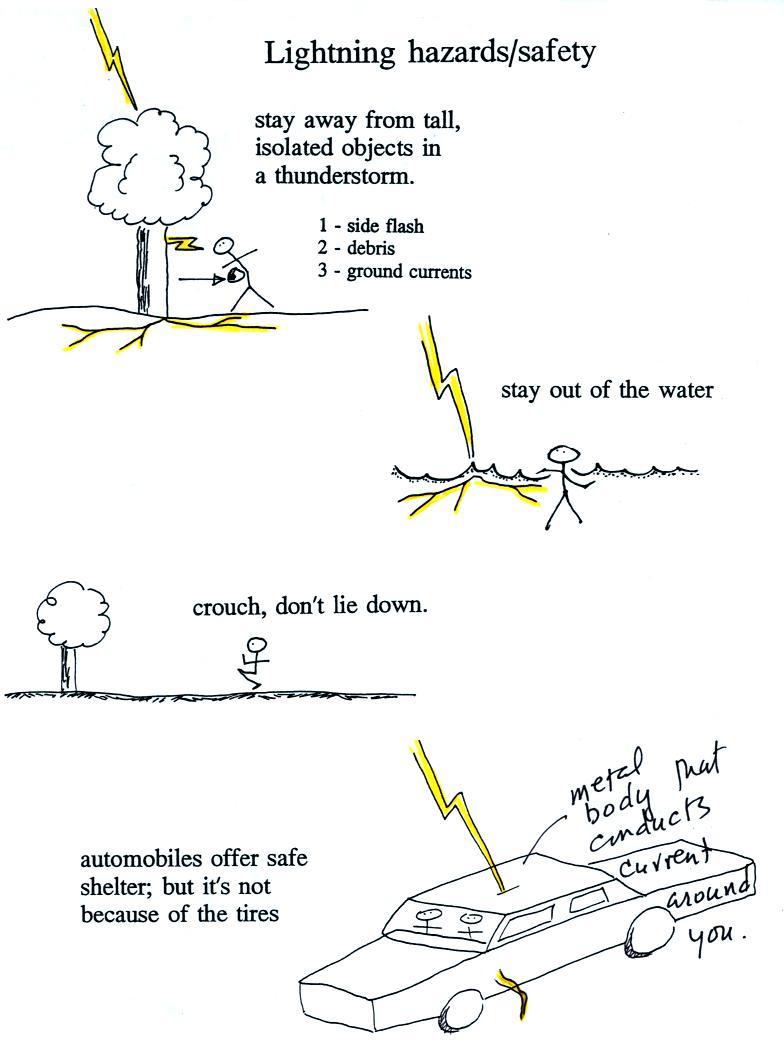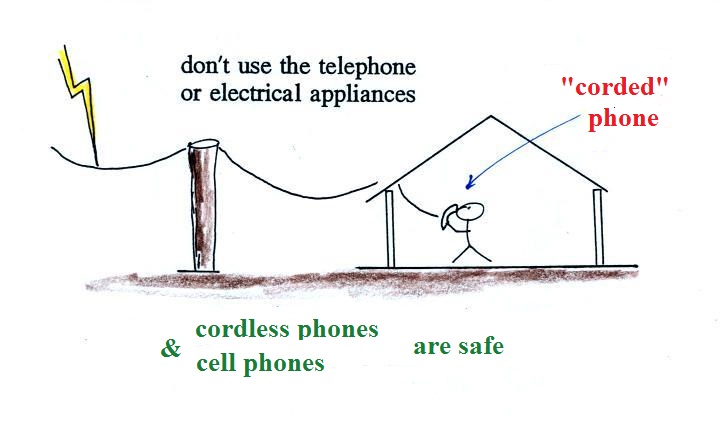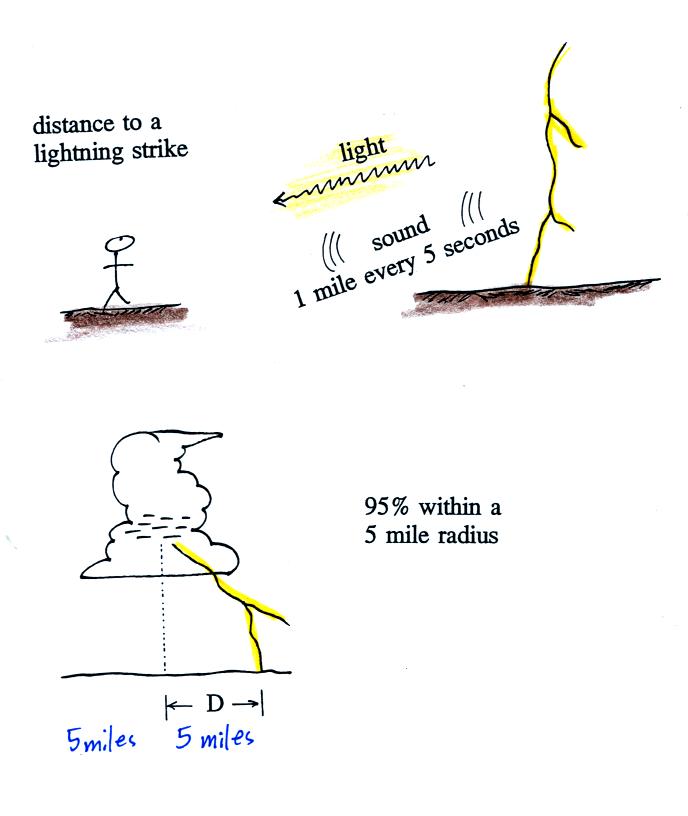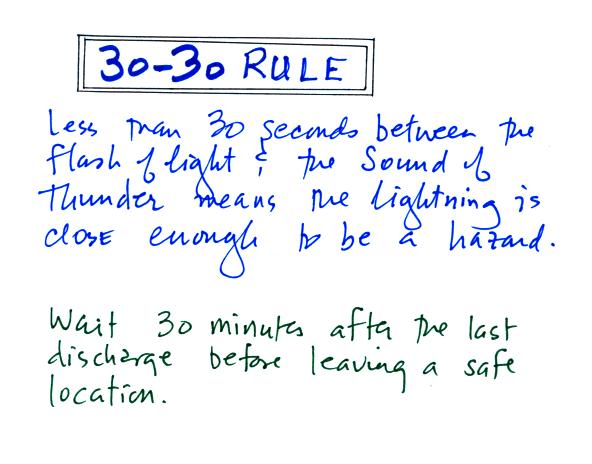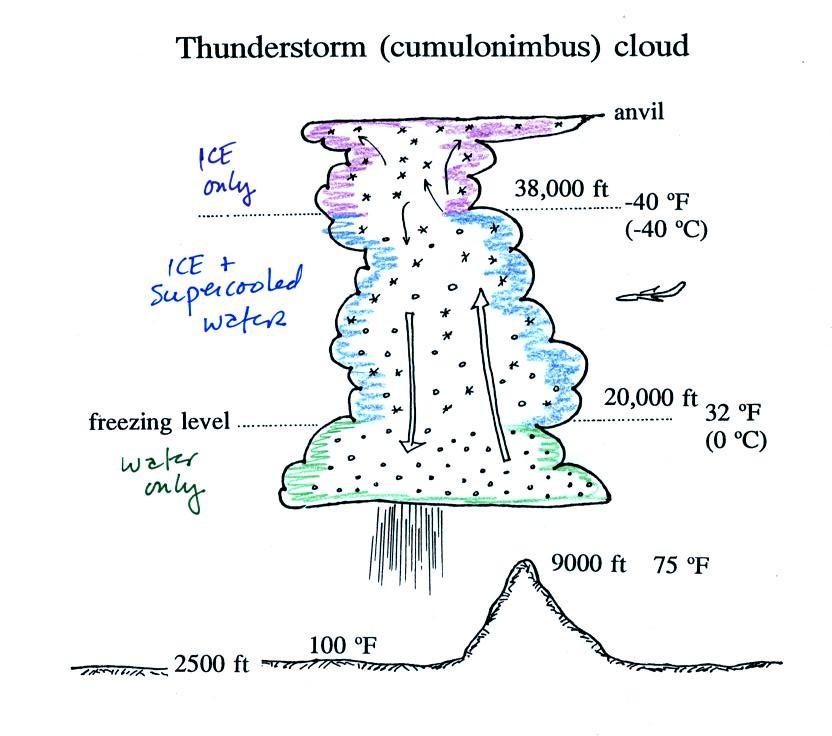
A typical summer
thunderstorm in Tucson is shown in the figure
above (p. 165 in the photocopied ClassNotes). Even
on the hottest day in Tucson in the summer a large part of
the middle of the cloud is found at below freezing
temperatures and contains a mixture of super cooled water
droplets and ice crystals. This is where
precipitation forms and is also where electrical charge is
created. Doesn't it seem a little unusual that
electricity, static electricity, can be created in the wet
interior of a thunderstorm?
1. What produces the electrical charge needed for lightning?
2. Different types of lightning
1. What produces the electrical charge needed for lightning?
2. Different types of lightning
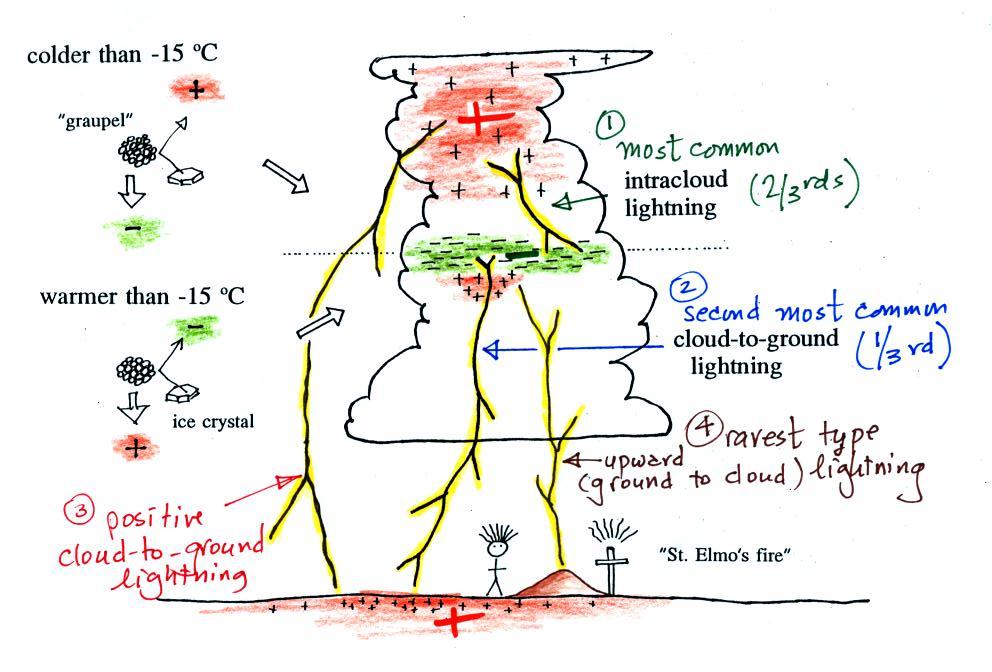
Collisions between precipitation
particles produce the electrical charge needed for
lightning. When temperatures are
colder than -15 C (above the dotted line in the figure
above), graupel becomes negatively charged after colliding
with a snow crystal. The snow crystal is positively
charged and, because it is smaller and lighter, is carried
up toward the top of the cloud by the updraft winds.
At temperature warmer than -15 (but still below freezing),
the polarities are reversed. A large volume of
positive charge builds up in the top of the
thunderstorm. A layer of negative charge accumulates
in the middle of the cloud. Some smaller volumes of
positive charge are found below the layer of negative
charge. Positive charge also builds up in the ground
under the thunderstorm (it is drawn there by the large
layer of negative charge in the cloud).
Air is normally an insulator, but when the electrical attractive forces between the volumes of charge in the cloud gets gets high enough lightning occurs. Most lightning (2/3 rds, maybe even 3/4) stays inside the cloud and travels between the main positive charge center near the top of the cloud and the layer of negative charge in the middle of the cloud; this is intracloud lightning (Pt. 1). About 1/3 rd of all lightning flashes strike the ground. These are called cloud-to-ground discharges (actually negative cloud-to-ground lightning). We'll spend most of the class learning about this particular type of lightning (Pt. 2). It's what kills people and starts forest fires. A photograph of a negative cloud to ground flash is shown below at left.
Positive polarity cloud to ground lightning (Pt. 3) accounts for a few percent of lightning discharges. Upward lightning is the rarest form of lightning (Pt. 4). The photo below at right shows an upward lightning discharge that was initiated by the Eiffel Tower in Paris. We'll look at both of these unusual types of lightning later in the class.
Air is normally an insulator, but when the electrical attractive forces between the volumes of charge in the cloud gets gets high enough lightning occurs. Most lightning (2/3 rds, maybe even 3/4) stays inside the cloud and travels between the main positive charge center near the top of the cloud and the layer of negative charge in the middle of the cloud; this is intracloud lightning (Pt. 1). About 1/3 rd of all lightning flashes strike the ground. These are called cloud-to-ground discharges (actually negative cloud-to-ground lightning). We'll spend most of the class learning about this particular type of lightning (Pt. 2). It's what kills people and starts forest fires. A photograph of a negative cloud to ground flash is shown below at left.
Positive polarity cloud to ground lightning (Pt. 3) accounts for a few percent of lightning discharges. Upward lightning is the rarest form of lightning (Pt. 4). The photo below at right shows an upward lightning discharge that was initiated by the Eiffel Tower in Paris. We'll look at both of these unusual types of lightning later in the class.
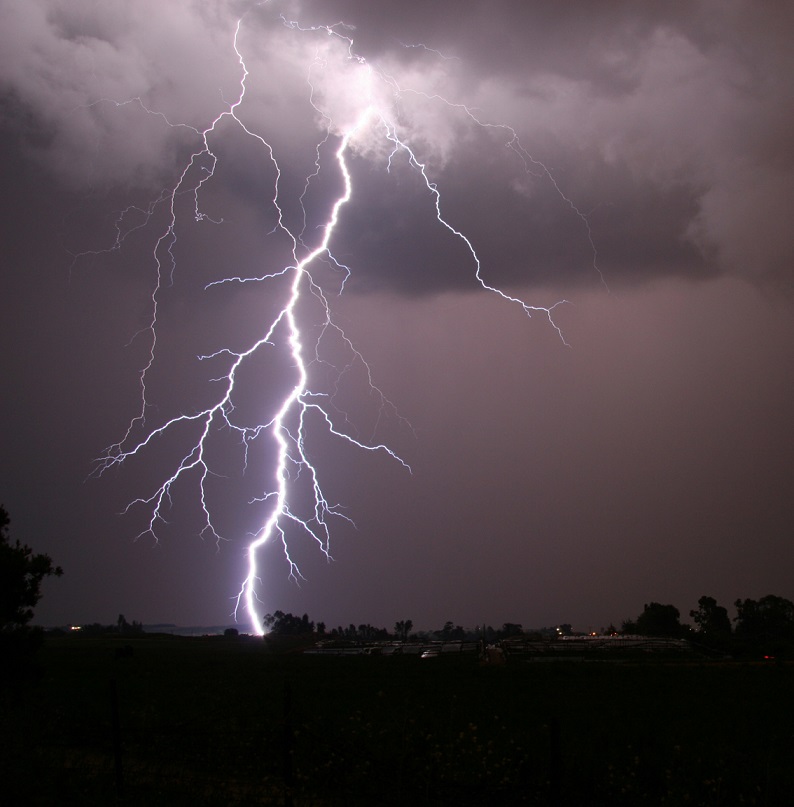 |
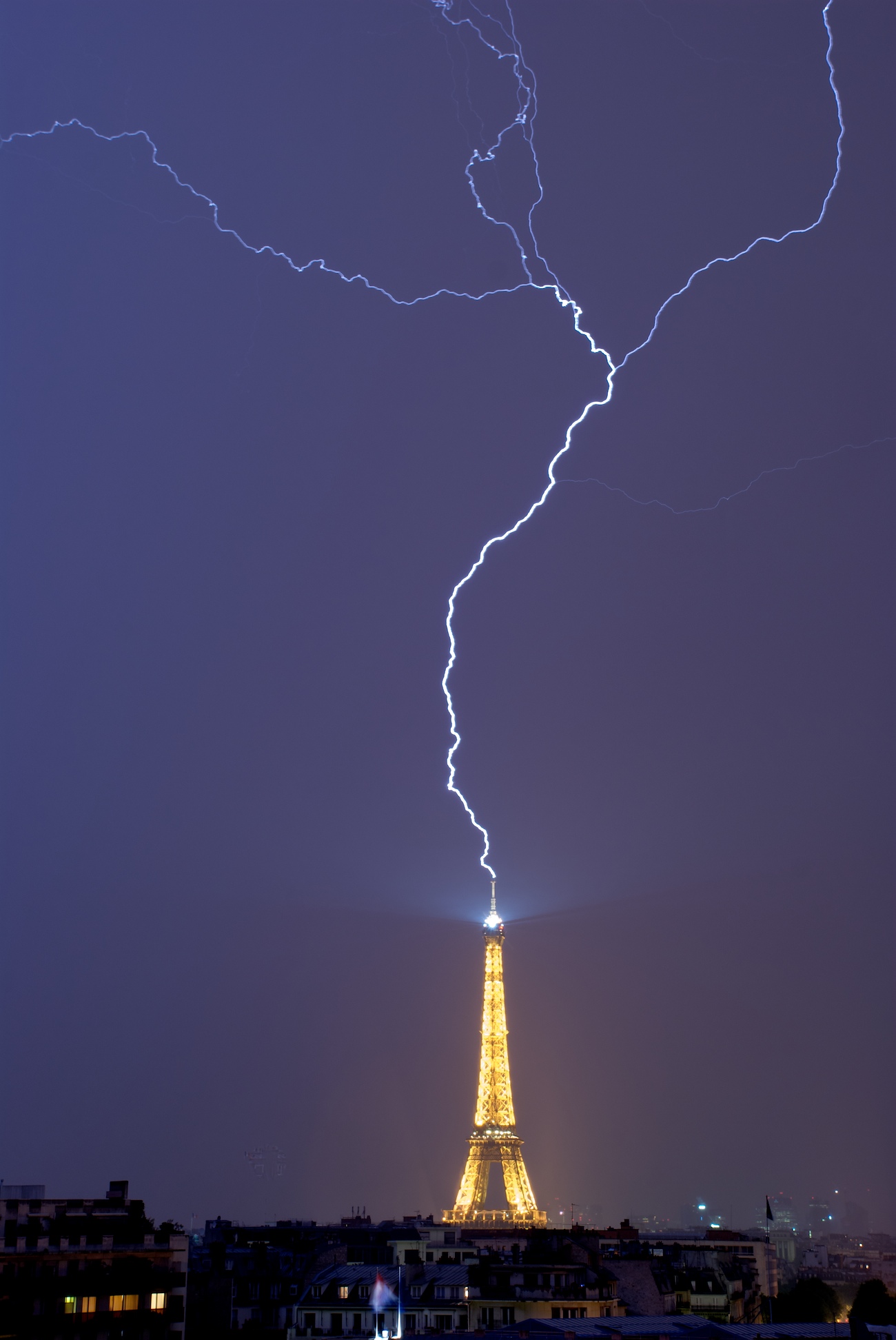 |
| Cloud to ground lightning with
downward branching (source
of this photo) |
An upward lightning discharge
initiated by the Eiffel Tower in Paris.
The branching, visible at the top of the
photograph, is upward. Photographed by Hakim
Atek, source
of this photo |
A couple of interesting things can happen at the ground under a thunderstorm. Attraction between positive charge in the ground and the layer of negative charge in the cloud can become strong enough that a person's hair will literally stand on end (see two photos below). This is incidentally a very dangerous situation to be in; I wouldn't wait around for my picture to be taken.
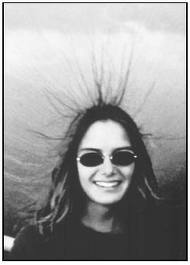 |
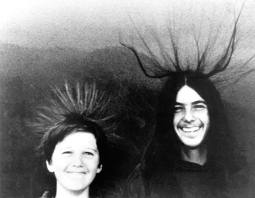 |
St. Elmo's Fire (corona discharge) is a faint electrical discharge that sometimes develops at the tops of elevated objects during thunderstorms. The link will take you to a site that shows corona discharge. Have a look at the first 3 pictures, they probably resemble St. Elmo's fire. The remaining pictures are probably different phenomena. St. Elmo's fire was first observed coming from the tall masts of sailing ships at sea (St. Elmo is the patron saint of sailors). Sailors in those days were often very superstitious and I suspect they found St. Elmo's fire pretty terrifying.
